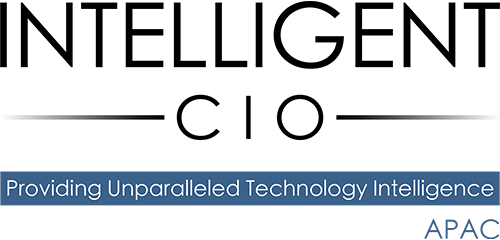More than a quarter of business leaders now demand a company-wide API strategy to unlock data and create connected experiences.
MuleSoft has reported that 70% of organizations struggle to provide completely connected user experiences across all channels.
MuleSoft’s 2022 Connectivity Benchmark Report, shows that this comes at a time when almost three-quarters (72%) of organizations’ customer interactions are now digital. Yet, as digitalization accelerates, organizations could lose on average US$7 million (US$6,846,979) in revenue if they fail to successfully complete Digital Transformation initiatives.
To grow in today’s competitive environment, companies need to deliver connected digital experiences – for both customers and employees.
“In this all-digital world, customers and employees expect truly connected experiences,” said Brent Hayward, CEO, MuleSoft. “However, siloed applications and data continue to hinder customer experience and Digital Transformation – and it is now costing businesses millions of dollars per year. Companies need to be able to easily integrate a growing number of apps and data sources to automate their business, create seamless digital experiences and drive growth.”
Based on a global survey of 1,050 CIOs and IT decision makers, the 2022 Connectivity Benchmark Report highlights the challenges and opportunities for organizations as they look to unlock their data to create and automate seamless experiences:
Customers expect seamless user experiences
Applications lie at the center of Digital Transformation and efforts to enhance the user experience. On average, organizations are using 976 individual applications (compared to 843 a year ago). Yet only 28% of these applications are integrated on average, indicating there is still an enormous opportunity to improve connected user experiences. MuleSoft’s report indicates that:
- Creating connected user experiences has become increasingly difficult: More than half (55%) of organizations said they find it difficult to integrate user experiences. This is up from 48% a year ago, showing there is increasing complexity for companies to meet their customers’ digital needs.
- Overcoming security and governance challenges is a hurdle: Security and governance (54%) was cited as the biggest challenge to integrating user experiences, ahead of outdated IT infrastructure (46%) and an inability to keep up with ever-changing processes, tools and systems (42%).
- Integrating user experience delivers business benefits: Of the organizations that have integrated user experiences, more than half said it had enhanced visibility into operations (54%) and increased customer engagement (54%). Other benefits realized included innovation (50%), improved ROI (48%) and increased automation adoption (45%).
Integration challenges hinder digital experiences and initiatives
Data silos remain a significant barrier to creating integrated user experiences, with the number of organizations citing silos as a challenge (90%) remaining unchanged from a year ago. The report shows:
- Integration headaches: The biggest challenges to Digital Transformation are integrating siloed apps and data (38%) and risk management and compliance (37%). 88% of respondents said integration challenges continue to slow Digital Transformation initiatives.
- Too much is being spent on custom integration: In their efforts to integrate apps and data from across the enterprise, organizations appear to be focusing more resources in the wrong areas, such as custom integration. As a result, they are increasing their technical debt. On average, organizations spent US$3.65 million on custom integration labor in the last 12 months, a 4% increase from last year (US$3.5 million).
- IT budgets are up, but so is demand: 85% of organizations said IT budgets have increased year-on-year (compared to 77% last year). At the same time, the number of projects IT is asked to deliver increased by 40% on average, a big jump from 30% a year ago. Despite the extra budget, IT is finding it difficult to meet the demands of the business. On average, more than half (52%) of projects weren’t delivered on time over the past 12 months.
Organizations turn to APIs to drive Digital Transformation and revenue
Despite these integration challenges, the vast majority (98%) of organizations use APIs. By using APIs to connect data and applications, organizations can digitally transform in a more sustainable manner and accelerate business success. The report indicates:
- A top down integration and API strategy: Most (90%) organizations now have a clear integration and API strategy. Over a quarter (26%) said leaders now demand that all projects abide by a company-wide API integration strategy, up from just 15% a year ago.
- Reuse is on the rise: Organizations are increasingly creating and using reusable IT assets and APIs to create new experiences and accelerate projects, rather than building from scratch each time. On average, 46% of organizations’ internal software assets and components are available for developers to reuse – an increase from 42% a year ago. Nearly half (48%) of organizations said IT is actively reusing these components, versus 41% in the 2021 report.
- Empowerment of business users: Enabling non-technical users to harness low-code tools to drive their own automation and Digital Transformation projects can take huge pressure off IT teams. More than half (55%) of organizations now have a ‘very mature’ or ‘mature’ strategy to empower these users to integrate apps and data sources powered by APIs (compared to 36% last year).
- APIs drive revenue: Two-fifths (40%) of organizations said they have experienced revenue growth as a direct result of leveraging APIs (compared to 28% a year ago).
“Digital agility is essential to successful transformation, allowing organizations to drive innovation at scale, deliver new initiatives faster, and create the experiences that customers want,” said Kurt Anderson, Managing Director and API Transformation Leader, Deloitte Consulting. “A modern strategy that combines integration, API management and automation is central to achieving digital agility. It enables organizations to easily connect and integrate their data, applications, and devices to create new digital capabilities and drive transformation projects.”
The 2022 Connectivity Benchmark Report was created in collaboration with Deloitte Digital, who together with Mulesoft, can help IT organizations across industries meet the continuously evolving demand to connect data and create transformation opportunities for the business.


